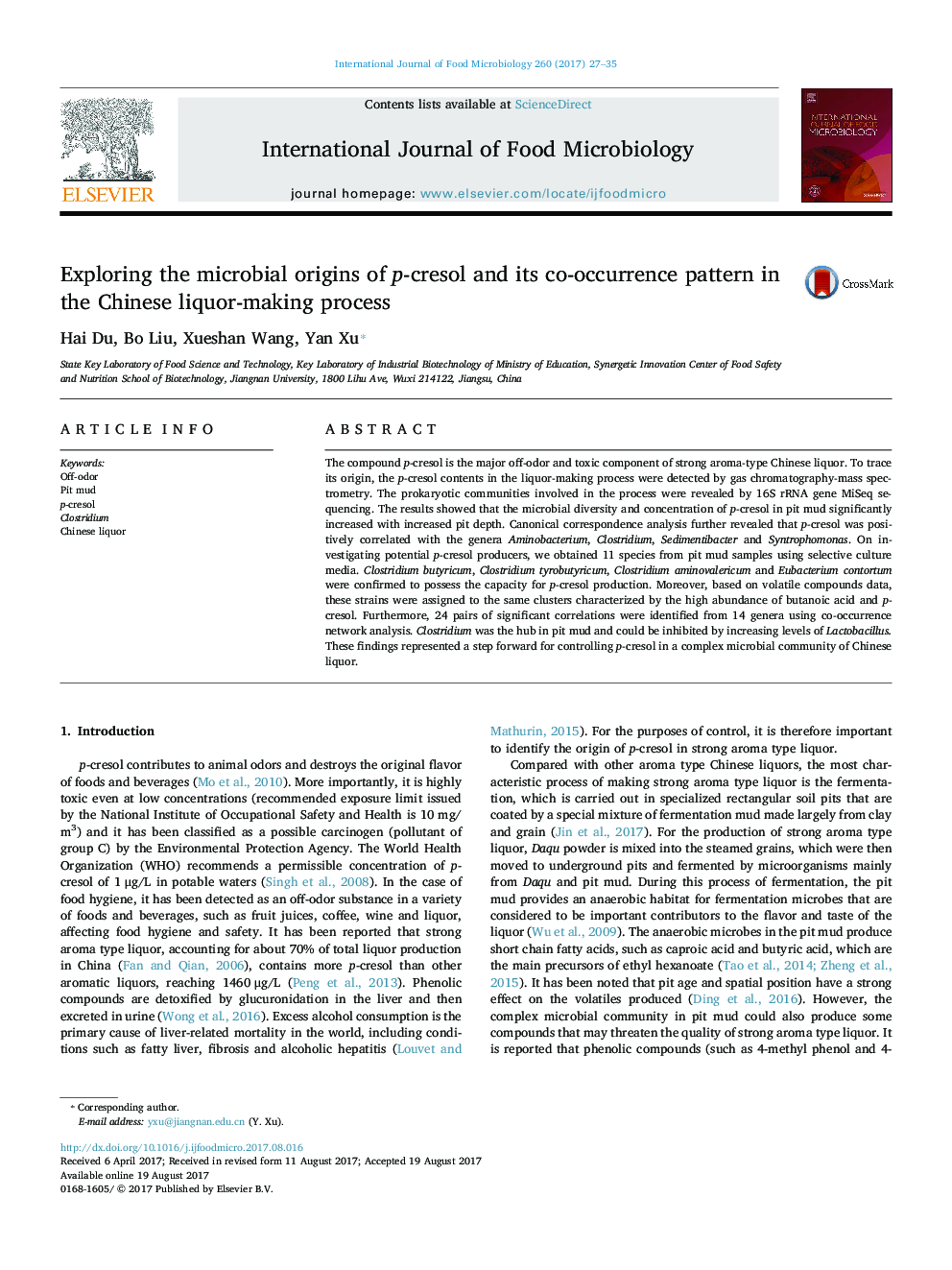| Article ID | Journal | Published Year | Pages | File Type |
|---|---|---|---|---|
| 5740608 | International Journal of Food Microbiology | 2017 | 9 Pages |
Abstract
The compound p-cresol is the major off-odor and toxic component of strong aroma-type Chinese liquor. To trace its origin, the p-cresol contents in the liquor-making process were detected by gas chromatography-mass spectrometry. The prokaryotic communities involved in the process were revealed by 16S rRNA gene MiSeq sequencing. The results showed that the microbial diversity and concentration of p-cresol in pit mud significantly increased with increased pit depth. Canonical correspondence analysis further revealed that p-cresol was positively correlated with the genera Aminobacterium, Clostridium, Sedimentibacter and Syntrophomonas. On investigating potential p-cresol producers, we obtained 11 species from pit mud samples using selective culture media. Clostridium butyricum, Clostridium tyrobutyricum, Clostridium aminovalericum and Eubacterium contortum were confirmed to possess the capacity for p-cresol production. Moreover, based on volatile compounds data, these strains were assigned to the same clusters characterized by the high abundance of butanoic acid and p-cresol. Furthermore, 24 pairs of significant correlations were identified from 14 genera using co-occurrence network analysis. Clostridium was the hub in pit mud and could be inhibited by increasing levels of Lactobacillus. These findings represented a step forward for controlling p-cresol in a complex microbial community of Chinese liquor.
Related Topics
Life Sciences
Agricultural and Biological Sciences
Food Science
Authors
Hai Du, Bo Liu, Xueshan Wang, Yan Xu,
